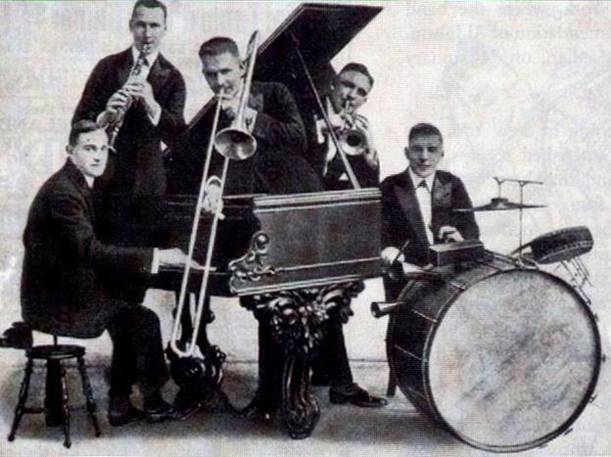


Salaparuta is a town in South-Western Sicily, in the valley of the Belice river, administratively part of the province of Trapani. In 1968 the original site of the town was near epicentre of the Belice Valley Earthquake and as a result, Salaparuta was completely destroyed and rebuilt not far from the original location. The current Salaparuta is still home to many of the citizens of the old town. Salaparuta is popularly known for its Salaparuta DOC wine production, also the main income source for the town.
Only a few people know that Salaparuta “by way of some strange alchemy, can claim many of the families who had a hand
in shaping the history of jazz and swing. We feel it is right and appropriate that these families are recognized and remembered, and that their stories are told, even here in Sicily where it all began, on the shores from which they departed for America at the beginning of the twentieth century.”
From Palermo to New Orleans, this is the story of Nick La Rocca, told by Italian TV personality and famous musician Renzo Arbore. Arbore was in town to present his film From Palermo to New Orleans, and there was jazz at the Italian Cultural Institute but also to celebrate the 40th Anniversary of Umbria Jazz, of which he is President.
“Few people know that on February 26, 1917, an Italian musician in New Orleans released the first record ever made in the history of jazz. That musician was Sicilian and his name was Nick La Rocca.” These are the opening words of From Palermo to New Orleans, and there was jazz, a documentary shot in Palermo, Salaparuta, New Orleans, New York and Chichago that is a tapestry of the true, fascinating, and larger-than-life, stories of the sacrifices, journeys and musical contributions made by Sicilian families in the United States. This film honors those artists whose influence, enormous success, and importance in the history of global music have been ignored and unrecognized, even in Italy for far too long.
Arbore conceived and wrote the film with Riccardo di Blasi, a longtime friend of the star who is a well known director and a Palermo native. The film features Arbore himself talking to several important guests, including Jimmy La Rocca, Nick's son and an accomplished jazz musician himself.
The story of the first jazz record ever recorded is easy....that day of 1917, a band names The Original Dixieland Jazz Band, led by la Rocca, was at the Victor's (a record company) studios in New York. “when the red light went on,” La Rocca recalled, “we had just enough time to count to two and it was a miracle that we were able to start together. I don't know, maybe the good Lord was with us.”
The band, a group of friends who all played in local bands using instruments and musical influences brought with them from the motherland, recorded two songs: “Dixieland Jass band One Step,” and “Livery Stable Blues.” They had a resounding success that surpassed that of Caruso (a native of Campania) and John Philip Sousa, selling a million and a half copies at 75 cents each. “A lot of the music they played was improvised,” Jimmy La Rocca said in the film, “many didn't even know music, they just played.”
The great Louis Armstrong publicly said in an interview that he was inspired by the music of La Rocca and his band at a very young age, referring to the group as the creators of a New Sound.
The film also showcases other important Italian musicians, both hailing from Salaparuta: Louis Prima and Leon Roppolo. Prima rode the musical trends of his time, starting with his seven-piece New Orleans style jazz band in the 1920s, then leading a swing combo in the 1930s, a big band in the 1940s, a Vegas lounge act in the 1950s, and a pop-rock band in the 1960s (Wikipedia). While Roppolo was a prominent early jazz clarinetist, best known for his playing with the New Orleans Rhythm Kings. The film also features contemporary jazz musicians of Italian descent who are still influenced by the work of these compatriots.
Yet From Palermo to New Orleans is not just a musical journey, it is also a personal and historical document which exalts Italian culture and history: there are emotional images of fellow Italians who arrived at Ellis Island,in search of a better life for them and their families. And today we are still living in their footsteps.
Source URL: http://test.iitaly.org/magazine/focus/facts-stories/article/la-rocca-and-his-band-palermo-new-orleans-and-there-was-jazz
Links
[1] http://test.iitaly.org/files/larocca1371142095jpg